Overview: nuclear scientists as assassination targets
By William Tobey, November 27, 2020
The scene of the assassination of Iranian nuclear scientist Mohsen Fakhrizadeh. Photo: Fars News Agency
Editor’s note: This article was originally published in the January/February 2012 issue of the Bulletin. It is being published here in updated form as part of the Bulletin’s coverage of the November 2020 assassination of Mohsen Fakhrizadeh, a prominent Iranian nuclear scientist who had been involved in the past in that country’s efforts to develop nuclear arms, but whose death, the Washington Post reported, would have little effect on Iran’s current nuclear program.
Since 2007, international media have reported the violent deaths of four scientists and engineers connected with Iran’s nuclear program and an attempt on the life of a fifth. The news reports on such killings are murky, incomplete, and, in some instances, likely inaccurate. The motivations and identity of the persons behind the killings are also obscure,1 but the fact that they are taking place is undeniable.
On January 15, 2007, Ardeshire Hassanpour, who had won a military prize for his work as a nuclear physicist at Iran’s Isfahan uranium conversion plant, reportedly died under mysterious circumstances related to “gas poisoning.” While possibly an industrial accident, his death went unreported for six days (Baxter, 2007). On January 12, 2010, physics professor Masoud Ali-Mohammadi was reportedly killed by a remotely controlled bomb wired to a motorbike (Saba, 2010). On November 29, 2010, a similar device also reportedly killed Majid Shariari, and a separate blast wounded Fereydoon Abbasi. Shariari was a nuclear engineer (Time, 2010). Abbasi is now vice president of the Islamic Republic and heads the Atomic Energy Organization of Iran (Sanger and Broad, 2011). On July 23, 2011, two gunmen shot and killed Darioush Rezaeinejad; Iranian state media published a report linking the killing to Tehran’s nuclear program (Cole and Schone, 2011), a tie later confirmed by the head of Iran’s nuclear program.
The appropriateness and legality of targeted killings of terrorists is already a matter of substantial discussion among legal scholars (Allston, 2010), as controversy over the recent killing of Muslim cleric Anwar al-Awlaki via a US drone attack illustrates. But nuclear scientists—even those in suspected illicit weapons programs—are different from terrorists. In fact, the killing of nuclear scientists and engineers raises many important—even unique—policy questions: What impels nations to undertake such extreme actions? What are the likely effects on nuclear proliferation programs? What disadvantages or retaliatory responses can be anticipated? Do legal and moral standards have a role in the matter?
Like most calculations related to the prevention of nuclear proliferation, the answers to these questions are neither easy to formulate nor categorical. And like many questions related to nuclear proliferation, these have roots stretching back to the dawn of the atomic age.
The Heisenberg uncertainty and beyond
Targeting atomic scientists to retard a potential nuclear weapons program predates the existence of nuclear weapons. Alarmed by the possibility that the giant of German physics, Werner Heisenberg, was working on an atomic bomb for Adolf Hitler, noted theoretical physicist Victor Weisskopf consulted with Hans Bethe, a renowned colleague working in the Manhattan Project, in the autumn of 1942; Weisskopf subsequently corresponded with Robert Oppenheimer, then newly appointed to lead theoretical work for the Manhattan Project. According to Thomas Powers’s account in Heisenberg’s War, Weisskopf wrote, “I believe that by far the best thing to do in this situation would be to organize a kidnapping of Heisenberg in Switzerland” (Weisskopf, 1942). Over time, within the Manhattan Project and the Office of Strategic Services (OSS), Weisskopf’s proposal mutated into a plot to kill Heisenberg—a plot that very nearly came to pass.
Because much, although still not everything, about the plot to assassinate Heisenberg is known, and because it is no longer politically sensitive, the case is worth delving into in some detail, as it adds clarity to more modern cases. One key element in the problem that confronted the Allies during World War II, however, was very different from later episodes: No one could doubt that Heisenberg would greatly advantage any Nazi effort to build an atomic bomb. Powers relates Oppenheimer’s view in 1944 that “the position of Heisenberg in German physics is essentially unique. If we were [undertaking a bomb project] in Germany, we should make desperate efforts to have Heisenberg as a collaborator” (Powers, 1993: viii). What the Allies could not know were Heisenberg’s intentions, and they famously remain a matter of debate, and even drama, today (Frayn, 1998).
American and British officials initially ignored the suggestion of Weisskopf and Bethe that Heisenberg be kidnapped (Powers, 1993). But the seed was planted—and it sprouted into kidnapping plans 15 months later (Powers, 1993).
Physicist Niels Bohr escaped from Nazi-controlled Denmark in September 1943, bearing what the New York Times described—in an early leak of nuclear weapons-related information— as “plans for a new invention involving atomic explosions…of the greatest importance to the Allied war effort” (New York Times, 1943). What Bohr carried was a rough sketch given to him by Heisenberg during their famous 1941 Copenhagen conversation;2 Bohr took the sketch to be of a weapon, but it was most likely a nuclear reactor. During a two-day rail journey in December 1943 from Chicago to Lamy, New Mexico, Bohr convinced Brig. Gen. Leslie Groves, then in charge of the overall Manhattan Project, that the drawing was evidence of a German bomb program. Despite Oppenheimer’s “formal assurance” that the sketch did not depict a viable weapon, Groves concluded that he must act to blunt the Nazi effort (Powers, 1993: 246–248).
Groves contacted the OSS—the swashbuckling US agency then responsible for intelligence and covert action—and by February 1944, Special Operations Branch officers were forming improbable kidnapping plans that included flying Heisenberg from an anticipated snatch in Switzerland, parachuting with him into the Mediterranean Sea, and rendezvousing in the water with a surfaced submarine. The inherent danger of such an operation shows that Heisenberg’s survival was not a high US priority; indeed, if capture by German authorities were imminent, the plan was to kill him (Powers, 1993). Nothing, however, could be done until he was located. Before he could be, these kidnapping schemes—but not the desire to neutralize Heisenberg as a threat—were put aside (Powers, 1993).
In November 1944, the OSS learned that Heisenberg planned to visit Switzerland the next month. Former major league baseball catcher and then OSS officer Moe Berg was dispatched to Zurich with orders that “Heisenberg must be rendered hors de combat” (out of action) if Heisenberg gave evidence that the German bomb effort was close to completion. Apparently Berg alone was to decide whether or not to kill Heisenberg (Powers, 1993: 391–392).
With a pistol in his pocket, Berg attended a lecture by Heisenberg, waiting for some sign of an advanced German atomic bomb program. Heisenberg offered no such signal and therefore survived. Instead, Berg reflected on his own “uncertainty principle” in regard to killing Heisenberg, a reference to the scientist’s most prominent contribution to the theory of quantum mechanics (Powers, 1993: 398–399).
Later that week, as the Battle of the Bulge turned to Allied advantage, Berg attended a dinner given for Heisenberg and heard him lament Germany’s coming loss of the war. This appeared to clinch the case that Heisenberg could not be part of a successful atomic bomb project and effectively ended any further US interest in killing him (Powers, 1993).
The end of World War II, however, did not mean that nation states were no longer interested in killing foreign scientists to address a perceived military threat. As Ian Black and Benny Morris reported in their 1992 book, Israel’s Secret Wars, under “Operation Damocles” in 1962, the Mossad assassinated Heinz Krug, the head of a German company involved in procurements related to Egypt’s missile-development efforts, and attempted to kill Hans Kleiwachter, an electronics expert with experience in Germany’s World War II V-2 rocket program (Black and Morris, 1992). On June 14, 1980, Yahia El-Meshad, who then led Iraq’s nuclear program, was beaten to death in a Paris hotel room; his killer was never identified (Russell, 1981). In 1990, Gerald Bull, a Canadian engineer and expert in long-range artillery who reportedly provided advice to both Iran and Iraq, was shot and killed outside his apartment in Brussels; authorities ruled out robbery as a motive when they found $20,000 left untouched in his pocket (Fried, 1990).
The attacks in Iran
The most recent killings of nuclear scientists involve the Iranian nuclear program. In an aggressive September 2011 speech to the International Atomic Energy Agency (IAEA) General Conference, Abbasi, the leader of Iran’s Atomic Energy Organization, denounced the killings of Ali-Mohammadi, Shariari, and Rezaeinejad, calling them “our scientists and experts.” He linked their deaths to recent international pressure, arguing that their names and addresses (along with other scientists’) were included in documents related to sanctions levied against Iran by the UN Security Council and the European Union (Abbasi, 2011: 6). Although the exact meaning of Abbasi’s speech is obscured by a poor translation, he seemed to hold the IAEA at least partially responsible for the killings. After describing the assassinations, he said, “We strongly urge the Agency to clear its name in cooperating and preparing the ground in these measures” (Abbasi, 2011: 6). Finally, he called on IAEA member states and Director General Yukiya Amano to condemn the killings “to prove their good will” (Abbasi, 2011: 6–7). Iranian Ambassador Ali Asghar Soltanieh went further, calling the killings “a crime against humanity.” Still, Soltanieh added that Iran “is not going to retaliate” (Jahn, 2011).
Responsibility for the killings and attempted killings of the Iranian nuclear scientists remains an unsolved mystery. Iran has accused several countries, but all have denied involvement. It is therefore impossible to know, with certainty, the thinking of those who sponsored the assassination plots. Nonetheless, assassinations would not go forward if the country sponsoring them did not believe there was some possibility of achieving positive results.
History suggests that when nations contemplate the extreme step of targeting nuclear scientists in another country, they are focused on the existential imperative that a hostile nuclear weapons program can raise. When the potential negative consequences of inaction are perceived to be infinite, otherwise reasonable doubts—about the quality of intelligence, or the negative consequences associated with unsavory action—may seem irrelevant. The specter of annihilation dramatically changes risk–benefit analyses. Under such circumstances, doing something will nearly always appear better than doing nothing.
Policy benefits and risks
A nation that made the fateful decision to proceed with assassinating nuclear scientists could hope, at most, to delay, but not halt, a hostile nuclear weapons program. Assassination might produce an effect beyond the individual scientists who are killed, perhaps deterring other scientists from joining or continuing to work in a nuclear program. Deterrent messages could even be transmitted in a psychological operations campaign. (Such messages were reportedly sent during Operation Damocles.)
Nonetheless, the empirical evidence is clear: Nuclear weapons programs are large, complex undertakings, involving hundreds of key people. Killing a few workers, even if they are talented and working on important projects, will not halt the undertaking. It is difficult to imagine a country having a scientific infrastructure large enough to support a nuclear weapons program, but too small to sustain a viable effort after the loss of even several individuals. (Had General Groves died during the Manhattan Project, could the US Army have found another hard-charging, talented manager to replace him? Very likely.) Nonetheless, if diplomatic efforts to halt a hostile program have broken down or evince little likelihood of success, even delay can be seen as victory.
From the perspective of the attacking nation, there is one other advantage of targeting nuclear scientists with covert action: deniability. There are many paths to deniability—claims of a rogue act by a deranged individual, false trails pointing to action by another nation, even sheer secrecy. Targeting scientists would probably be less effective than military strikes on nuclear facilities in terms of lasting programmatic setbacks. Because of its deniability, however, assassination might be seen as less provocative than an overt military operation. As a result, it might also carry a lower risk—in terms of both likelihood and severity of retaliation.
These are modest advantages, even from the perspective of a nation that fears a failure to act will lead to its own destruction. Indeed, they can rightly be seen as manifesting desperation born of the absence of viable diplomatic or military alternatives. Such was the case in the plot against Heisenberg. In the midst of World War II, diplomacy, export controls, and sanctions were irrelevant. The Allies bombed German scientific facilities but were unsure of the strategic results, because they could not accurately assess the damage they had caused or identify all covert facilities. Yet they were desperate that Germany not prevail in a race for an atomic bomb.
The disadvantages of targeting nuclear scientists are, of course, many. First, even in theory, it is very difficult to target effectively those scientists and engineers most critical to a program’s success. Such precise targeting would require intimate and detailed knowledge of a program’s day-to-day operations and problem solving—a difficult matter, given that nuclear proliferation programs are shrouded in secrecy. Moreover, it is not enough simply to target those who have made significant past contributions to a program. Rather, it would be necessary to predict whose skills will be necessary to solve future technological problems.
Nuclear weapons programs are dynamic and the relative importance of a particular individual can change over time. In 1993, Hans Bethe reflected on the idea of kidnapping Heisenberg, saying: “It may have made some sense when we suggested it, but later on, in ’44, it made no sense. By that time, we knew pretty well that not much was going on” (Broad, 1993).
Neither is seniority necessarily a useful gauge; depending on the maturity of a program, engineers may be more valuable than scientists, and technicians, who actually operate machinery, may be most indispensable of all. At least with respect to crude but still-devastating nuclear weapons, manufacture is now more about engineering than science.
The case of Heisenberg also illustrates how difficult it can be to know what a particular scientist is doing. Advanced physics in the 1930s was a small club. Several scientists in the Manhattan Project had studied with or under Heisenberg, who had also visited the United States. Despite this intimate professional knowledge, or perhaps because of it, scientists involved in the Manhattan Project tended to overestimate Heisenberg’s role in the German atomic program.
Second, targeted killings can be counterproductive, providing the country with a covert nuclear program a reason to diminish cooperation with the IAEA. Whether out of genuine belief, or simply as a pretext, a country can argue that divulging the names and responsibilities of key scientists and engineers—a fundamental part of the IAEA’s methods for verifying safeguards implementation—would make them vulnerable to attack. If the IAEA is prevented from understanding the role of significant personnel in a nuclear program and denied opportunities to speak with them, its effectiveness will be severely impaired. Safeguards verification is analogous to creating a mosaic: Without access to individuals, IAEA inspectors would not have half the tiles they need for a complete and accurate picture.
Worse, targeted killings can become a pretext (albeit an illegitimate one) for suspending or even ending cooperation with the IAEA. Abbasi’s evidence-free statement that the IAEA must “clear its name” of abetting the killing of Iranian nuclear personnel amounts to an attack on the agency’s legitimacy and may not bode well for future cooperation, should Iran decide for its own reasons that IAEA inspections are no longer convenient.
Third, and related to the previous disadvantage, targeted killings would inevitably increase operational security within a nuclear proliferation program. If secrecy is a matter of life and death, security breaches are likely to be fewer and farther between. Given that lack of information about the progress of nuclear programs is a huge barrier to effective export control and diplomatic or military action, this is a significant problem.
Fourth, killing nuclear personnel may well have a strong negative effect on any chance of a negotiated solution to a nuclear proliferation issue. Such action understandably raises levels of hostility and mistrust within the targeted program. The venom apparent in Abbasi’s IAEA speech surely reflects his own experience as a target, as well as his empathy for dead colleagues. Given the covert origins of Iran’s enrichment program and its longstanding refusal to abide by IAEA Board of Governors and UN Security Council resolutions, it is not clear that a negotiated solution to the nuclear crisis is or ever was possible, but the violent deaths of several Iranian nuclear personnel are likely to harden Tehran’s position. (Likewise, recent criminal charges detailing an Iranian plot to kill the Saudi Arabian Ambassador Adel al-Jubeir in Washington raise levels of hostility and mistrust among US policy makers, who now may find it difficult to pursue a negotiated solution.)
Finally, targeted killings of nuclear scientists may provoke retaliation, either in-kind or asymmetrical. Soltanieh’s claim that Iran will not retaliate is both an argument that Iran is showing forbearance and a reminder: Revenge is possible. Indeed, the media has linked the plot against al-Jubeir to purported Wikileaks disclosures of US diplomatic cables recounting that he told US officials that the Saudi king urged them to “cut off the head of the snake,” an apparent reference to attacking Iran’s nuclear facilities (Shuster, 2011).
What role do legal and ethical considerations play in the matter of targeted killings of nuclear scientists? In the abstract, the world will be more dangerous and less just if every nation feels within its rights to kill citizens of another country that advance their country’s military capabilities. Moreover, nuclear scientists are different from terrorists. They do not pose an immediate threat of violence against another nation. Presumably, they are acting within the laws of their country. Unless their nation is at war, they are not obviously legitimate military targets.
All the same, as a practical matter, if the existential imperative is present, it will likely trump legal and ethical considerations in the deliberations of any nation seriously contemplating attacks on nuclear scientists. Nations have an inherent right of self-defense. Although that right is limited by treaty and international law, when the maximum risk is a nuclear detonation, the historical record demonstrates that, plausibly, nations cannot be expected to refrain from contemplating whatever steps are necessary to avert it. The preceding judgment is an assessment about what is likely, not what is right or just.
What conclusions then are to be drawn about the killing of nuclear scientists? Two come to mind. First, given that the assassination of nuclear scientists can only impede, but not stop, nuclear weapons programs—and even this outcome is uncertain and very difficult to achieve—and that there are significant disadvantages to such actions, prudent nations will contemplate assassinations only in the gravest of circumstances. These circumstances would seem to have to include at least several components: There must be solid and substantial evidence of a covert nuclear weapons program. That program must be in the hands of a hostile power that has such fundamental differences with another country as to pose an existential threat to it, attempts to deter notwithstanding. There must be no credible possibility of a diplomatic solution. In short, the circumstances are those that would make an act of desperation seem reasonable.
The second conclusion relates to instances in which killings have taken place. Given the obviously limited advantages and serious disadvantages of targeted killing of nuclear scientists, a state that undertakes such action must calculate that it has essentially no other choice: that all other options (short of military operations) to halt a hostile nuclear weapons program have failed and will fail, that time is running short, and that knowledge about the status and development of the program is less important than slowing it down immediately.
That some nation has apparently come to these conclusions about Iran only underscores the enormous danger of an Iranian nuclear program that continues to operate in violation of international law, as held by the UN Security Council. Writing of the judgments involved in the Heisenberg case, Thomas Powers wisely concludes, “All we can say at this remove is that strange things may seem reasonable to men who know only enough to fear the worst” (Powers, 1993: 252). This, of course, is the paradox that daily confronts those who oppose nuclear proliferation.
Funding
This research received no specific grant from any funding agency in the public, commercial, or not-for-profit sectors.
Notes
1 Iran has variously blamed Israel, the United States, and the United Kingdom for the attacks; for example, the Iranian parliamentary speaker Ali Larijani called the fatal shooting of electrical-engineering postgraduate Darioush Rezaeinejad in July a “US-Zionist terrorist act.” All three countries have denied the Iranian accusations.
2 Heisenberg discussed with Bohr the possibility of using fission to produce a weapon; whether his intentions were to warn Bohr of a potential Nazi effort, discourage the Allies from undertaking a similar project, or simply to pursue a scientific question remains unresolved.
References
- Abbasi F (2011) Iran—Statement to the IAEA General Conference 2011. International Atomic Energy Agency, September 16, pp. 6–7. Available at: iaea.org/About/Policy/GC/GC55/Statements/iran.pdf. [Google Scholar]
- AllstonP (2010) Report of the Special Rapporteur on Extrajudicial, Summary, or Arbitrary Executions. UN General Assembly Human Rights Council, A/HRC/14/24/Add.6, May 28. Available at: ohchr.org/english/bodies/hrcouncil/docs/14session/A.HRC.14.24.Add6.pdf. [Google Scholar]
- BaxterS (2007) Iranian nuclear scientist assassinated by Mossad. Sunday Times, February 4. Available at: timesonline.co.uk/tol/news/world/us_and_americas/article1324321.ece. [Google Scholar]
- BlackI MorrisB (1992) Israel’s Secret Wars. New York: Grove Weidenfeld. [Google Scholar]
- BroadW (1993) New book says U.S. plotted to kill top Nazi scientist. New York Times, February 28, p. A10. Available at: nytimes.com/1993/02/28/world/new-book-says-us-plotted-to-kill-top-nazi-scientist.html?pagewanted=all&src=pm. [Google Scholar]
- ColeM and SchoneM (2011) Who is killing Iran’s nuclear scientists? ABC News, July 26. Available at: go.com/Blotter/killing-irans-nuclear-scientists/story?id=14152453. [Google Scholar]
- FraynM (1998) Copenhagen. London: Samuel French. [Google Scholar]
- FriedJ (1990) Gerald Bull, 62, scientist who violated arms law. New York Times, March 25. Available at: nytimes.com/1990/03/25/obituaries/gerald-bull-62-shot-in-belgium-scientist-who-violated-arms-law.html. [Google Scholar]
- JahnG (2011) Iran won’t ‘retaliate’ for nuclear scientist killings. Reuters, September 20. Available at: reuters.com/article/2011/09/20/us-nuclear-iran-assassinations-idUSTRE78J4IT20110920?rpc=401&feedType=RSS&feedName=worldNews&rpc=401. [Google Scholar]
- New York Times(1943) Scientist reaches London. October 9. Available to subscribers at: nytimes.com/gst/abstract.html?res=F1071EFB3F5C167B93CBA9178BD95F478485F9&scp=1&sq=Scientist+Reaches+London&st=p. [Google Scholar]
- PowersT (1993) Heisenberg’s War. New York: Alfred Knopf. [Google Scholar]
- RussellG (1981) Attack and fallout: Israel and Iraq. Time, June 22. Available at: time.com/time/magazine/article/0,9171,950533-12,00.html. [Google Scholar]
- SabaS (2010) Israel and US behind Tehran blast—Iranian state media. BBC News, January 12. Available at: bbc.co.uk/2/hi/8453401.stm. [Google Scholar]
- SangerD and BroadW (2011) Survivor of attack leads nuclear efforts in Iran. New York Times, July 22, p. A4. Available at: nytimes.com/2011/07/23/world/middleeast/23iran.html?pagewanted=all. [Google Scholar]
- ShusterM (2011) Wikileaks cable hints at motive for alleged Iran plot. NPR, October 15. Available at: npr.org/news/front/141364863. [Google Scholar]
- Time(2010) Is the Mossad targeting Iran’s nuclear scientists? November 30. Available at: time.com/time/world/article/0,8599,2033725,00.html. [Google Scholar]
- WeisskopfV (1942) Letter to Robert Oppenheimer. October 28, Oppenheimer papers, Box 77, Weisskopf folder, Lary of Congress. [Google Scholar]
Together, we make the world safer.
The Bulletin elevates expert voices above the noise. But as an independent nonprofit organization, our operations depend on the support of readers like you. Help us continue to deliver quality journalism that holds leaders accountable. Your support of our work at any level is important. In return, we promise our coverage will be understandable, influential, vigilant, solution-oriented, and fair-minded. Together we can make a difference.


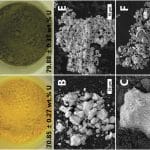
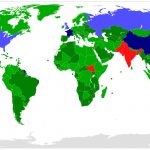


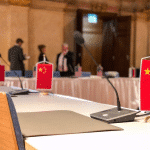
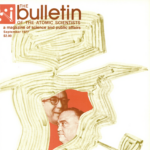
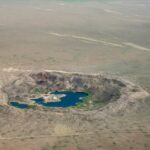
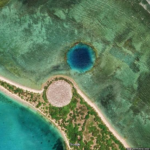

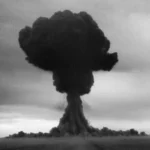
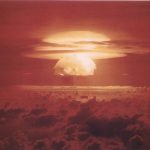

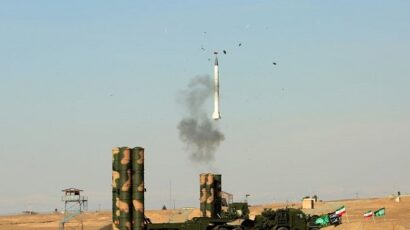







This is all wrong… there is nothing good about the extra-judicial execution of enemies, anywhere. This includes bin Landen who people are so thrilled about.
Dik
While the Western media is quick to declare Iran a “terrorist” state, Israel (and USA) terrorism gets a free pass. When is Israel ever labeled a terrorist state despite its routine violations of international laws and UN conventions? Both the USA and Israel are actively opposing the UN’s new prohibition banning nuclear weapons. So if an Iranian scientist is labeled a “terrorist” and murdered, will American and Israeli nuclear scientists be next since once the UN’s legal Ban goes into force they could be considered criminals? Is it time to cancel the US governments nuclear “modernization” program – its Life… Read more »
“Nations have an inherent right of self-defense. Although that right is limited by treaty and international law, when the maximum risk is a nuclear detonation, the historical record demonstrates that, plausibly, nations cannot be expected to refrain from contemplating whatever steps are necessary to avert it.”
That applies equally to Iran, I assume.
This column is an abomination and should be removed from your website. The logic is that someone perceived Iran enough of a threat that it warranted killing a noted Iranian nuclear scientist – therefore, they must know more than we know, so we should, also, be very afraid of Iran’s nuclear weapons intentions. Presumably that someone was Israel, which has nuclear weapons, with the complicity of the United States, which also has nuclear weapons. And yet, we want other countries to obey the NPT and be good children and not acquire these weapons that we reserve for ourselves and our… Read more »
Thank you for your comment. I disagree with your assessment of the article, which, to my way of thinking, provides an overview of why assassinations of nuclear scientists have happened, not a justification for those assassinations. As the author wrote, “The preceding judgment is an assessment about what is likely, not what is right or just.” The Bulletin has indeed long supported efforts to reduce nuclear risk through diplomacy that leads to verifiable agreements and continues to do so.
William Tobey and, by extension, BAS for printing his article, give the impression that there is a logical parallel in the assassination of Fakrizhadeh to the logic which was followed by US intelligence in considering the kidnapping or assassination of Heisenberg at the dawn of the nuclear age. His concluding paragraph gives credence to Fakrizhadeh’s killers: “[t]hat some nation has apparently come to these conclusions about Iran only underscores the enormous danger of an Iranian nuclear program that continues to operate in violation of international law, as held by the UN Security Council.” Printing this as if it were a… Read more »
Again, I disagree with your assessment. Quite vigorously, in fact; the article does not in any way suggest that the contemporary assassinations of Iranian nuclear scientists and the historical US contemplation of killing or kidnapping Heisenberg belong in the same analytical category. But thank you for writing in, and for reading us.
“kill 10, scare 10,000.” Perhaps the intent is not to interrupt the nuclear program at all but to dissuade those involved in it. The point of assassination being right/wrong is moot in this consideration and not part of the discourse. I’ll stipulate for the sake of brevity that it is wrong. And of course in this type of battle, if the desired affect isn’t achieved; discouraging the scientists and engineers from perpetuating atomic weaponry, the casualty list will broaden to find those in that particular person’s sphere of emotional attachment that will give that scientist/engineer reason to pause. Is it… Read more »
Attacking any significant point in a nation’s defences risks underlining their importance. Science is a team activity, similar to every other activity in a mass civilization. Removing a top researcher merely motivates the rest of the team who undoubtedly possess the intellect and training to continue the work. As nuclear weapons are the ultimate argument, I expect the Iranians will accelerate their program using these murders as pretext, excuse, to produce a realistic deterrent to Israel and the US.